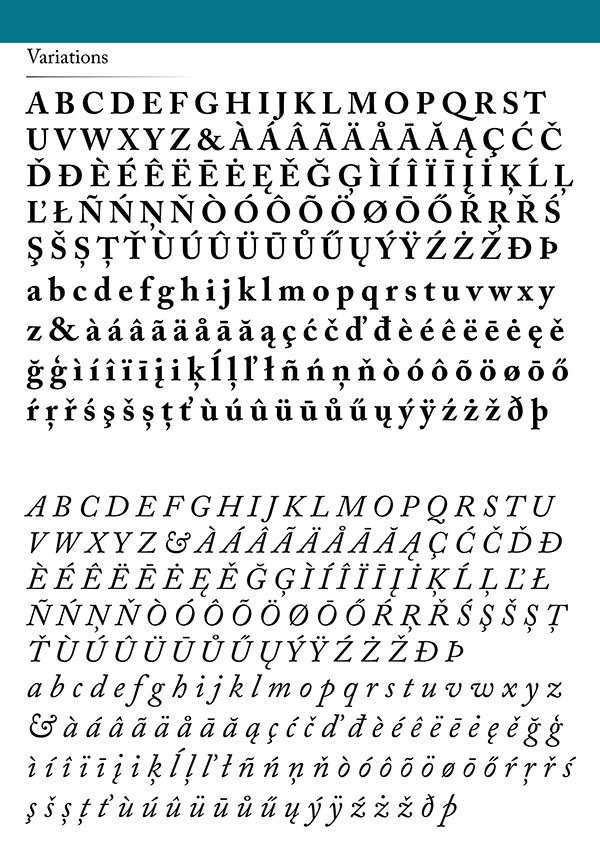

Of the excellence of the performance it is sufficient to say that the Specimen placed Caslon absolutely without rival at the head of his profession ‘and,’ as Nichols says, ‘for clearness and uniformity, for the use of the reader and student, it is doubtful whether it has been exceeded by any subsequent production.’ Of these, all, with three exceptions, are Caslon’s own handiwork, and represent the untiring industry of fourteen years.

Greek: English, Pica, Long Primer, Brevier.


Hebrew: English, English with points, Brevier. Gothic, Coptic, Armenian, Samaritan: Pica of each. Roman and Italic: French Canon, 2-line Great Primer, 2-line English, Double Pica, Great Primer, English, Pica, Small Pica (2), Long Primer (2), Brevier, Nonpareil, and Pearl. Titling: 5-line Pica, 4-line Pica, 2-line Great Primer, 2-line English, 2-line Pica, 2-line Long Primer, 2-line Brevier. “The sheet is arranged in four columns, and displays 38 fonts: Following is the description of the historic artefact by Talbot Baines Reed in A History of the Old English Letter Foundries (1887): Caslon’s first specimen sheet was issued in 1734 and exhibited his roman and italic types in 14 different sizes. The first printed version of the United States Declaration of Independence is set in Caslon.ħ. From 1720 to 1780, few books were printed in England that did not use type from his foundry.Ħ. Caslon typefaces that “combined delicate modeling with a typically Anglo-Saxon vigour” gained immediate popularity and was the font-to-go during the 18th century -and beyond. As a result, he received loans and sufficient trade to enable him to set up a complete typefoundry. His first Latin typefaces were a roman and italic cut in the pica size (12pt), of a style that was fully realized by the publication of his foundry's specimen sheet in 1734.ĥ. Caslon's first typeface was an Arabic made at the English size (14pt), commissioned by the Society for Promoting Christian Knowledge before 1725, followed by a Hebrew created for William Bowyer in 1726, and a Coptic for Wilkins first used in 1731.Ĥ. By 1716, he started business in London as an engraver of gun locks and barrels and as a bookbinder's tool cutter. Having contact with printers, he was induced to fit up a type foundry, largely through the encouragement of William Bowyer. Caslon was born in Cradley, Worcestershire in 1692 or 1693 and trained as an engraver in nearby Birmingham. Through his typefoundry and products, Caslon established the printing industry in his home country, largely inspired by the Dutch Baroque types, the most commonly used types in England before Caslon's typographic dominance.Ģ. Caslon's typefaces transformed English type design and first established an English national typographic style. William Caslon (1692–1766) is Britain's first and most celebrated typefounder.


 0 kommentar(er)
0 kommentar(er)
